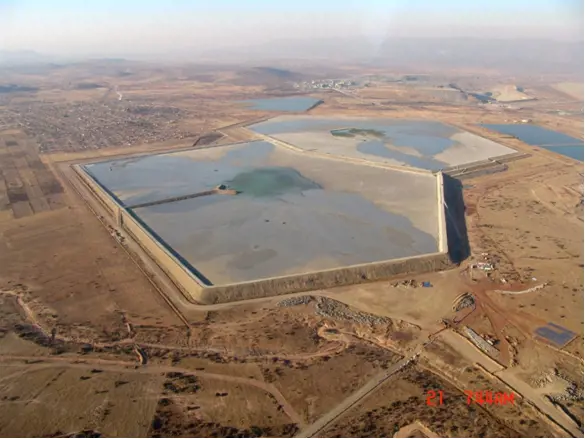The Mogalakwena platinum mine is located approximately 35km to the north west of the town of Mokopane in the Limpopo Province of South Africa and is the only open cast platinum mine within the Anglo American Group.
Pilot paste project
This project involved establishing, commissioning and operating a pilot scale thickener, deposition flumes and evaporation paddocks. The aim of the test work was to characterise the tailings material in terms of rheology and geotechnical properties and to calculate the water consumption of the tailings material at different slurry densities.
The pilot plant was packed into a container and assembled on site along with the evaporation paddocks and deposition flumes. On-site testing included thickener optimisation and rheology testing along with evaporative drying tests. Samples were taken from the evaporation paddocks and tested off site to determine the moisture content with depth over time. Off-site testing included determining the thickener sizing and operating parameters along with geotechnical testing to determine the consolidation and strength characteristics.
Tailings dam project
This project involved the conversion of tailings dam No.2 from a conventional upstream spigot deposition type dam to a waste rock impoundment dam. Dam No.2 originally accommodated the production rate from the South concentrator. The modification was required to accommodate a higher rate of rise on the dam due to an increase in the production rate as a result of the commissioning of the new North platinum concentrator. The new tailings dam for the new North concentrator was in the process of being constructed after a delay as a result of community and land access issues.
Prior to commencement of the impoundment construction activities, dam No.2 was decommissioned for a period of 6 months. Waste rock material was sourced from the open-pit operations and hauled from the pits to an intermediate stockpile close to dam No.2. In order to overcome access and maneuverability restrictions around tailings dam No.2, a smaller fleet of trucks and other equipment was used to construct the waste rock walls using the downstream wall-building technique. The waste rock walls were constructed in 2 x 6m lifts. A dry compacted tailings interface layer was constructed on the upstream of the waste rock wall to manage and control seepage. Tailings slurry deposition continues to be performed using “spigots”.

